Archive for the ‘Nail Fungus Infection’ Category
Proximal Subungual Onychomycosis (Nail Fungus)
Proximal Subungual Onychomycosis (Nail Fungus)
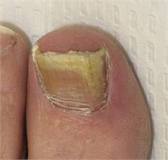 Least common in people with healthy immune systems but found frequently in people who have compromised immune systems, proximal subungual onychomycosis stands out because the progression of the disease starts at the cuticle and grows out with the nail.
Least common in people with healthy immune systems but found frequently in people who have compromised immune systems, proximal subungual onychomycosis stands out because the progression of the disease starts at the cuticle and grows out with the nail.
Proximal subungual onychomycosis usually causes the nail to become disfigured, as in other nail fungus infections, but as it starts at the cuticle and works its way up, it is more likely to infect the nail bed early on, causing the nail bed to develop bumps and irregularities. This then may cause the nail plate to become dislodged and fall off, exposing the nail bed to possible further infection.
Similar to distal subungual onychomycosis, the majority of cases of proximal subungual onychomycosis are caused by the same dermatophyte, Trichophyton ruburm. However this particular nail fungus infection can also be caused by a different dermatophyte, Trichophyton mentagrophytes. Proximal subungual onychomycosis can also be caused by molds. Another defined symptom of proximal subungual onychomycosis is the skin around the nail may become swollen, red and inflamed and may start to ooze pus. This is more commonly seen when the nail fungus infection is caused by molds than by dermatophytes.
Unfortunately, these distinguishing symptoms are what cause proximal subungual onychomycosis to be misdiagnosed as a bacterial infection instead of a fungal infection by some physicians. As antibiotics do not kill fungi, this course of treatment does nothing to stop the infection. An antifungal is required to eradicate molds, yeasts and dermatophytes.
Proximal subungual onychomycosis occurs more often in people who have depressed or deficient immune systems. It is rarely seen in people with good immunity. Immunodepression can be caused by procedures like chemotherapy or in people who are recovering from an autoimmune disease or an organ transplant and have had their immune system deliberately suppressed.
Proximal subungual onychomycosis occurs frequently in people with unhealthy immune systems and even more commonly in people with human immunodeficiency virus or HIV. This is such a common occurrence that if a patient contracts this form of nail fungus infection and no other cause can be found, the doctor will likely suggest an HIV test. Be prepared if you have a fungal nail infection and it is discovered to be proximal subungual onychomycosis, to have your doctor suggest an HIV test. This is a test that requires your consent to perform. And just because you may receive a diagnosis of proximal subungual onychomycosis doesn’t necessarily mean that you have contracted HIV.
The only way to cure proximal subungual onychomycosis is to take an oral antifungal medication. If the nail fungus is caused by dermatophytes Trichophyton rubrum or Trichophyton mentagrophytes then it is likely that your doctor will prescribe terbinafine, also known as Lamisil. The dose is usually one 250 mg pill once a day for six weeks for a fingernail infection and twelve weeks for a toenail infection. A nice thing about Lamisil is that it is usually less expensive than the other current generation antifungals.
Itroconazole, or Sporanox, is used for treatment when the cause of the proximal subungual onychomycosis is unknown because it is effective against both dermatophytes and Candida infections. This tends to be a more expensive treatment method than some of the others.
Fluconazole commercially known as Diflucan, is able to treat proximal subungual onychomycosis but is not used as often as the other available medications. This medication stops the fungal growth and therefore the spread of the disease but does not kill the fungus itself. The difference between these two processes is referred to as fungistatic (stopping growth) and fungicidal (killing growth).
This particular drug tends to slow down the growth so that the immune system can take care of it on its own. As many of the cases of proximal subungual onychomycosis happen in people with previously depressed immune systems, this is not necessarily the best drug choice. Fluconazole (Diflucan) is taken until the symptoms resolve and the infection is gone.
What are the symptoms of a Nail fungus and how can I tell if I have a Nail Fungus Infection?
What are the symptoms of a Nail fungus and
how can I tell if I have a Nail Fungus Infection?
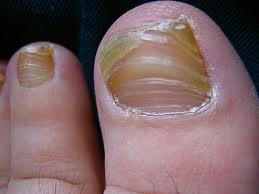 You’d think these would be fairly straightforward questions that ought to illicit simple answers. Unfortunately not only is this not true, but it is confusing enough that sometimes doctors misdiagnose nail fungus (or onychomycosis). Knowing the symptoms will assist you in helping your doctor to order the appropriate diagnostic tests so that you end up with the correct solution to your problem.
You’d think these would be fairly straightforward questions that ought to illicit simple answers. Unfortunately not only is this not true, but it is confusing enough that sometimes doctors misdiagnose nail fungus (or onychomycosis). Knowing the symptoms will assist you in helping your doctor to order the appropriate diagnostic tests so that you end up with the correct solution to your problem.
There are two basic causes of nail infections. Bacterial and fungal. Onychomiycosis, or fungal nail infection, is usually caused by a dermatophyte called Trichophyton rubrum. If not, it is caused by Candida albicans, a yeast growth (also a fungus). As nail infections differ in variety and in cause, the correct cure must be applied. A fungal infection should be treated with an anti-fungal whereas a bacterial infection should be treated with an antibiotic.
Onychomycosis affects the nail bed (skin underneath the nail) nail plate (the hard surface that we refer to as the nail) or the skin around the nail. About one third of skin infections and half of nail infections are caused by Onychomycosis. The visual signs are the abnormalities caused by the nail fungus. A white or yellowish crust appears on top of or embedded in the nail. This is the actual fungus growth. Sometimes it appears as streaks that follow the line of the nail against the infected digit (finger or toe) and sometimes it appears at the cuticle (soft area at the base of the nail). As the fungus spreads, it covers the entire surface of the nail, turning it to a milky white or yellow. Frequently it causes the nail to become ridged and deformed. This is a result of the dermaptophytes emitting destructive waste product as a result of consuming keratin. If the fungus gets underneath the nail plate, it can cause the nail bed to become irregular. This causes the nail plate to release from the bumpy nail bed and the nail becomes loose and can fall off.
If the nail fungus infection becomes severe, or if it contains Candida, the area around the nail can become swollen and sensitive to the touch. The skin may express (think ooze) pus and be very uncomfortable, even painful. These are common signs of infection. The pus is a result of white blood cells rushing to the area to fight off the infection. This is your body trying to do its job and tell you and your doctor that something is wrong.
It is most common for pus to be present in the case of bacterial infections. Thus your doctor should check for this before looking for fungal infections. To add to the confusion, there are diseases that mimic a nail fungus, including hallopeau acrodermatitis, lichen planus, nail bed psoriasis (which can occur in conjunction with fungal infection of the nail), nail bed melanoma, Reiter syndrome, yellow nail syndrome, onycholysis, and paronychia. Because of this factor, more than one test may be necessary to determine the correct course of treatment.
Different forms of onychomycosis will require different samples from the affected area. In some cases the nail can be sampled from the end or the top can be scraped for a sample, in others, the nail will need to be removed entirely. Whereas this can be a bit scary, it is also to your advantage as it then exposes the nail bed so that it can be treated.
The most typical tests performed on a nail culture to look for onychomycosis are a potassium hydroxide wash, which allows for the sample to be put under a microscope and searched for evidence of fungal growth, or a fungal culture, where the sample piece of nail is put in an environment (usually a petri dish) where it has the necessary components to thrive and create new growth, thus showing what kind of fungal infection it is. In the unlikely event that neither of these tests show positive for onychomycosis, the remaining nail sample can be pulverized and sent to a pathology lab for analysis or submitted for a bacterial culture if it is determined that the infection is bacterial instead of fungal.
Determining what kind of infection you have and what to do about it are very important when dealing with a nail infection of any kind. Having the infected area looked at by a physician, preferably a dermatologist, is the best way to deal with these diseases as they can help to rule out and diagnose serious problems as well as knowing what to do about the infection in the first place.
Prescription Treatments for Onychomycosis – A Doctor’s Recommendations
Prescription Treatments for Onychomycosis
A Doctor’s Recommendations
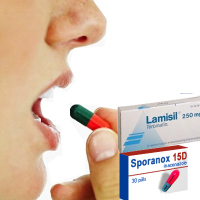 Where once onychomycosis was considered solely a cosmetic problem, doctors are treating it with greater concern. Nail fungus is unattractive, yes, but it also affects the infected person’s willingness to interact with others, especially in situations where exposing the infected nail or having other people come into contact with it may make the sufferer uncomfortable.
Where once onychomycosis was considered solely a cosmetic problem, doctors are treating it with greater concern. Nail fungus is unattractive, yes, but it also affects the infected person’s willingness to interact with others, especially in situations where exposing the infected nail or having other people come into contact with it may make the sufferer uncomfortable.
Beyond the psychological and social repercussions associated with onychomycosis, the basic function of the nail is disrupted. The point of having the nail sheath (the hard part of the nail) is to act as an armor for the soft tissue beneath and to assist in how we sense and interpret the world. A foot that has an infected nail or nails may interfere with normal sensation and even the ability to walk. Add to this the possibility of a nail fungal infection allowing for what is referred to as a ‘superinfection’, the chance that other bacteria and viruses could layer themselves on top of the fungal infection and cause further harm, and it is time to fix the problem.
These are the reasons behind the medical communities more aggressive treatment of onychomycosis. On the patient side of the equation, more people are requesting treatment and mentioning the problem to their doctors earlier to nip it in the bud.
There are two basic categories of treatment for onychomycosis. Oral (by mouth) and topical (applied directly to the infected area) Which treatment your doctor chooses will depend on a variety of factors. If the lunula (white area at the base of your fingernail) is affected by either distal subungual onychomycosis or proximal subungual onychomycosis then the oral medical prescription is the method of eradication. How the patient feels about the entire process is taken into account as well. Therefore it is not uncommon to use both an oral and a topical medication in conjunction. Working the infection from both sides of the body (in and out) can be a very effective treatment.
Choosing the oral prescription medication treatment is not to be considered lightly. One of the main drawbacks of this method of fungus eradication is that all of the antimycotic (antifungal) medications available for the treatment of onychomycosis have the potential to cause liver damage. It is imperative that your doctor test your liver function before beginning a course of these drugs and it is likely that your doctor will continue to monitor your liver during the treatment. If a patient has any history of or current liver problems, an oral medication should not be taken. The patient should monitor themselves as well, telling their doctor if they experience upper abdominal pain, malaise, fatigue, or if they notice jaundice (yellowing skin or yellowing of the eyes), pale colored stools or particularly dark urine.
In the past, Griseofulvin was the only available oral prescription medication to treat onychomycosis. It did work, but not terribly well and usually came with a passel of side effects, particularly when moderate to high doses were recommended. Griseofulvin treatment also took a long time and it was common for the infection to reoccur after the treatment stopped. Fortunately a variety of options have been created since then.
Terbinafine, more commonly known as Lamisil is very effective at fighting onychomycosis caused by dermatophytes, which is the most common cause of the disease. Terbinafine is prescribed as a 250 mg pill taken once a day for six weeks for fingernail infections and for twelve weeks if treating toenails. In some cases, pulse therapy (taking a drug for a certain period of time, then giving the body time off) has been effective. A complete blood count and liver panel should be taken before this treatment is started as well as four weeks into the therapy.
Itroconazole also known as Sporanox is also commonly administered in pulse dosing. The usual treatment schedule is 200 mg by mouth once a day for one week per month over the course of three months. Itraconazole can have negative reactions with several other forms of medication so telling your doctor exactly what you are currently taking before starting treatment is a medical necessity. A liver panel should be taken before this treatment is started and four weeks into the therapy.
Fluconazole, otherwise known as Diflucan is taken once a week in either 150 or 300 mg doses until the symptoms are gone. The treatment may last up to nine months before positive results are seen. Again, this drug may have negative interactions with other medications so tell your doctor what you are currently taking to avoid this. No blood tests are required when taking fluconazole but your doctor may order them anyway.
It is most common to use topical onychomycosis prescriptions in cases that are caught early on and therefore still mild, and in conjunction with an oral medical prescription. An incredibly effective topical prescription is Ciclopirox, commercially known as Penlac. This is an 8% topical solution that is applied to the infected area once a day. While it is a safer delivery method than oral antimycotics, when used alone it only achieved a 5% success rate.
When all other methods have failed, and/or in severe cases of onychomycosis, surgery becomes an options. There are three different methods of surgical nail removal: mechanical, chemical or surgical nail avulsion (removal). The nail can be mechanically or surgically avulsed (torn off) which is done after numbing the area with a local anesthetic as it can be quite painful. This is most common when the nail has already pulled away from the nail bed. A concentrated solution of 50% urea can be used to both eradicate the infection and soften the nail for removal and can be a fairly painless process. Once the nail has been removed, keeping the area clean and dry to prevent further or re-infection is necessary.
References
Ciclopirox (Penlac) prescribing information
Fluconazole (Diflucan) prescribing information
Itraconazole (Sporanox) prescribing information
Terbinafine (Lamisil) prescribing information
Fungal Toenail Infections and Using Home Remedies
Fungal Toenail Infections and Using Home Remedies
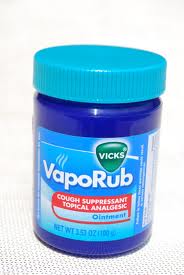 When people think of the phrase ‘home remedy’ they envision something that has been passed down through generations of family members and passed through many people by word of mouth. This is fairly accurate. As most of our grandparents and great grandparents grew up in a time when going to the doctor wasn’t as easy as it is today and when medicinal compounds weren’t that far away from what was already available in the house, many home remedies may seem strange, but especially in the case of fighting toenail fungus, they just may work!
When people think of the phrase ‘home remedy’ they envision something that has been passed down through generations of family members and passed through many people by word of mouth. This is fairly accurate. As most of our grandparents and great grandparents grew up in a time when going to the doctor wasn’t as easy as it is today and when medicinal compounds weren’t that far away from what was already available in the house, many home remedies may seem strange, but especially in the case of fighting toenail fungus, they just may work!
There are a great many home remedies suggested for sufferers of toenail fungus and even more people will agree that they are effective. Everything from soaking your feet in Listerine or vinegar to applying Vicks VapoRub, bleach, peroxide or various essential oils to the affected area are circulating out there. Whereas the intelligence behind putting bleach directly on your skin is questionable, there are online-forums-worth of people who will swear by this and other methods.
Some useful remedies
The theory behind many of these treatments is that the fungus requires a certain environment to grow in, which includes a favorable pH level. Soaking your feet in something like a solution of vinegar and water would alter that pH level rather drastically and make the growing environment more hostile. One problem with this particular method is that soaking your whole foot in vinegar changes the pH in every area your skin comes into contact with the solution, which frequently dries out the skin, leaving it more prone to infection. A viable alternative is to soak a cotton ball in vinegar and place that on the affected area for 15-20 minutes. This isolates the vinegar to the places it is most needed and doesn’t damage the healthy skin surrounding the infection. This technique also works with the suggestion of Listerine.
“Why Vicks VapoRub?” many people ask. The common theory is that it has to do with the eucalyptus in the product. The results are fairly unanimous from those who have tried it, it really works to clear up toenail fungus, and works fast. If you choose this method, you must cover the entire affected area and rub the compound in well. Reports state that the infection starts to clear up within days.
Using rubbing alcohol or peroxide, applied to the nail, the surrounding area and under the nail bed if possible, are two other very common remedies. The likelihood of irritation is fairly high with these two but they have also been proven effective at killing toenail fungus.
All of the remedies listed here have shown to be effective at slowing, killing and/or removing toenail fungus. But, as when using any home remedy, you must use a bit of common sense. If the infection gets worse or if the skin around the infected nail becomes irritated and infected as well, stop treatment immediately and see your doctor. Most of these remedies are for the early stages of toenail fungal infections and should not be started if your toe is already oozing pus or if the nail has separated from the nail bed. Again, if this is your situation, contact your health care professional right away.
Acrylic Nail Fungus Infections
Acrylic Nail Fungus Infections
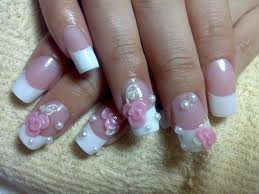 Many people choose to have acrylic nails applied to their hands. These are usually much stronger than the normal human nail and for those whose nails are very weak, it is an excellent solution to their problem of constant breakage or unattractiveness.
Many people choose to have acrylic nails applied to their hands. These are usually much stronger than the normal human nail and for those whose nails are very weak, it is an excellent solution to their problem of constant breakage or unattractiveness.
However there is the potential for a fungus to get in between the acrylic nail and the natural nail and find a great place to grow. Most salons practice excellent hygiene. However some don’t. Those are probable breeding and propagating grounds for the fungus. If you have your nails done, make sure you go to a salon that sterilizes their equipment between customers and uses antibacterial products.
Sometimes there is just nothing to be done. A fungus may just invade, no matter how hard you and your salon try. This can happen if a fungus has already attached itself to your nail, and you have an acrylic one put over the top, or if an item isn’t sterilized and it passes the fungus from one infected person onto you. A trained nail specialist is supposed to be able to recognize the symptoms of nail fungus infection and will advise against putting the acrylic nail over the infected nail. This is good, as covering an infected nail just makes the infection worse. Allowing the fungus to have a good growing environment is the worst thing you can do, and having the extra protection of the acrylic nail as well as it trapping warmth and humidity creates that positive environment. Your nail specialist will advise you on treatment options or recommend that you go see a doctor.
What if I Do Become Infected?
There are some very simple treatment options if you do get an infection underneath an acrylic nail.
- Using an over-the-counter product such as Lamisil cream to rub on the affected nail and surrounding skin every day. Apply to the top and underneath the nail
- Tea Tree Oil, which is both an antiseptic and an antifungal can also be rubbed on the afflicted nail and surrounding skin every day. Apply to the top and underneath the nail.
- Cleaning the dirt and gunk out from underneath the nail is another good method as it removes possible spores and possible food sources. Wiping the cleaned area down with rubbing alcohol afterward will help to kill off the fungi already existing.
- A last resort is to go to your doctor and discuss the prescription medicine options that are available. Many of these come with serious side effects, such as potential damage to the liver, so make sure this is something you are healthy enough to do and willing to see through to the end.